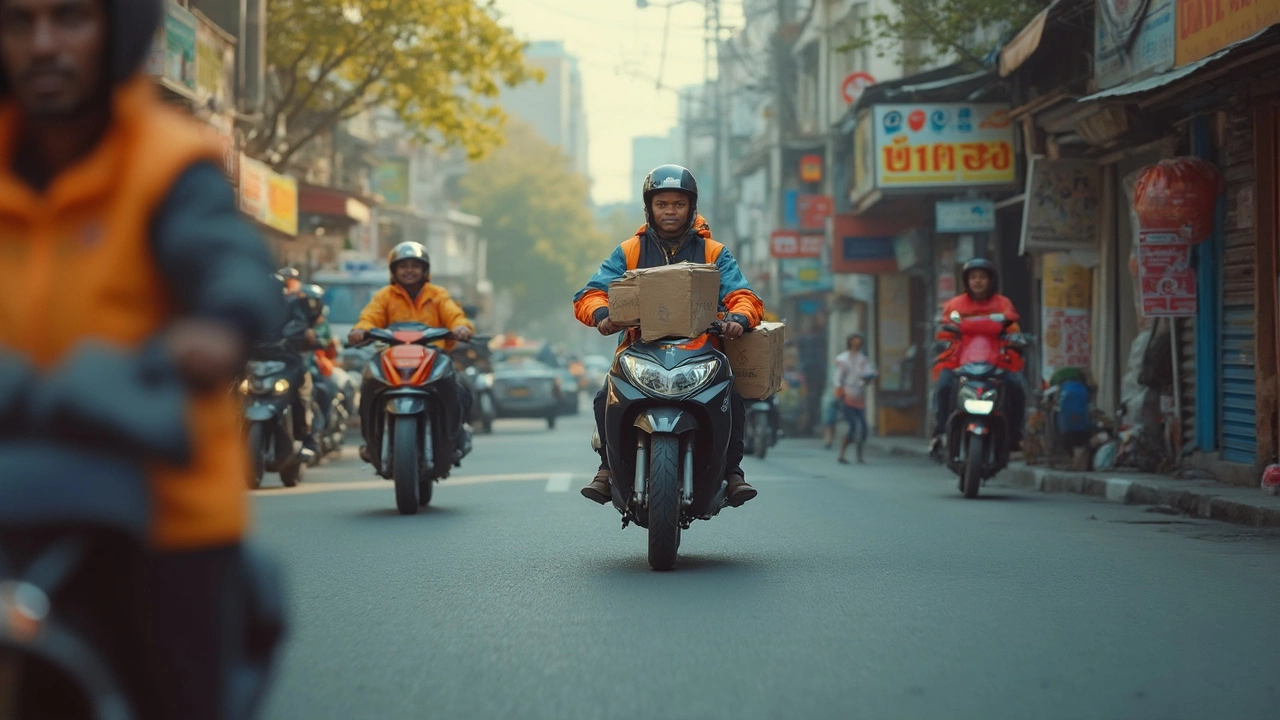Last Mile Delivery: What It Is and Why It Matters for Your Business
When a package reaches the doorstep, that’s the last mile. It’s the final stretch that decides if a customer smiles or sighs. Even if your warehouse runs like clockwork, a slow or missed last mile can ruin the whole experience. That’s why many companies treat it as a strategic advantage rather than a simple courier task.
Why Last Mile Delivery Is a Game Changer
First, speed is king. Shoppers now expect next‑day or same‑day drops, and brands that meet those expectations see higher repeat rates. Second, cost matters. The last mile can chew up 30‑40% of total shipping spend, so optimizing routes, vehicle loads, and technology can shave off big dollars. Third, data matters. Real‑time tracking, AI‑driven route planning, and predictive delivery windows turn a routine drop into a transparent, confidence‑boosting service.
Our own blog breaks this down further. In "How Long Does Last Mile Delivery Take?", we dive into average times, common delays, and practical steps you can take today. If you’re curious about the service model, "Last Mile Delivery as a Service" explains how a subscription‑style partnership works and why it’s catching on fast.
Choosing the Right Last Mile Partner
Not all carriers are created equal. Look for a partner that offers local expertise, flexible scaling, and robust tech. A good system should let you see each package on a map, send live SMS updates, and reroute on the fly if traffic snarls appear. Ask for case studies: How did they help an e‑commerce retailer cut delivery time by 20%? Did they integrate with your order management platform?
Amazon’s own network is a prime example. Our post "Understanding Amazon Last Mile Delivery" shows how they leverage micro‑fulfillment centers, crowdsourced drivers, and AI to hit tight windows. While you may not replicate Amazon’s scale, you can adopt similar tactics—like using small, city‑based hubs to reduce travel distance.
Start by mapping your order volume by region. If 70% of orders land in a few metros, a partner with a strong urban fleet will win. If you serve remote towns, look for a provider that blends own‑fleet trucks with local courier networks.
Finally, test before you commit. Run a pilot in a single city, compare on‑time rates, customer feedback, and total cost. Use that data to negotiate service‑level agreements that protect your brand.
Last mile delivery isn’t just the end of a route; it’s the front line of customer experience. By picking the right partner, leveraging tech, and constantly measuring performance, you turn every doorstep drop into a brand‑building moment.
How Long Does Last Mile Delivery Take? Speed, Challenges, and Industry Facts
Explore how long last mile delivery really takes, what slows it down, and what you can do about it. Get facts, insider tips, and industry insights.
Read MoreLast Mile Delivery as a Service: How It Works and Why It Matters
This article explains what last mile delivery as a service really means, how it works, and why businesses are jumping on board. It digs into the challenges, cost factors, and the role of tech in making fast local deliveries possible. You'll find real-world examples, practical tips, and a breakdown of how this service can help both big e-commerce giants and smaller shops. By the end, you'll have a clear picture of why last mile delivery is changing how we get our packages. It's everything you need to know to stay ahead in the world of modern shipping.
Read MoreUnderstanding Amazon Last Mile Delivery: What You Need to Know
Amazon's last mile delivery is the final leg of the delivery process, taking packages from a distribution center to the customer's doorstep. This phase is crucial as it directly impacts customer satisfaction. The article explores how Amazon efficiently manages this process, the technology involved, and provides tips for consumers to optimize their delivery experience.
Read More

